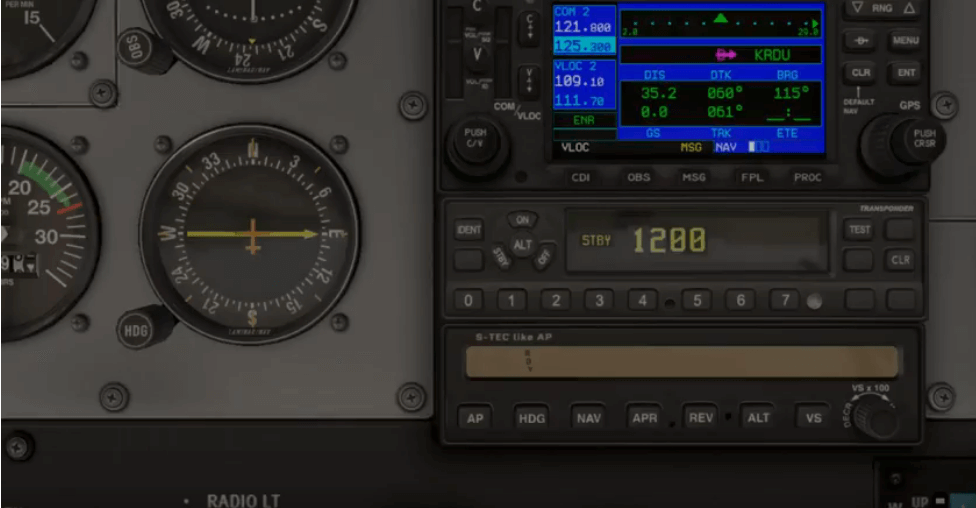



The comparable product in S-TEC’s lineup is the 55X flight control computer. The 3100 goes beyond those systems, providing far superior features and, presumably, performance (we plan to flight test the system as soon as possible) at a price point that will be competitive with its legacy products. Those autopilots, available in hundreds of models of planes, were once the only economically feasible way for owners of light GA planes to put flight control systems in their planes. S-TEC’s entry-level autopilots are extremely popular because they are rate-based units that use rate-of-turn instead of attitude to base their commands, compared with legacy autopilots for this class of plane. The 3100 will effectively take the place of the popular S-TEC 55X by costing slightly less while providing a great deal of capability, of which its legacy autopilots could only dream. Genesys announced in late July its new S-TEC 3100 digital autopilot. With new capabilities and a great price point, the new S-TEC autopilot leapfrogs its predecessors Here’s a roundup of the big recent announcements on the autopilot front: There are also new flat-panel solutions for existing planes from Dynon and Garmin, though your autopilot choices depend on which display system you go with, so sure to make informed decisions when the time comes.
#STEC 50 AUTOPILOT WITH GPSS UPGRADE#
An upgrade to the somewhat limited G5 display, the GI-275 does much more, including allowing you to control the autopilot through the display. The Garmin GI-275 is the most noteworthy. Today you can those autopilots to play along with display/control options that weren’t available when we wrote this. Then, just a few months ago, a bevy of autopilot approvals came through, including blockbuster announcements by Garmin and Genesys of next-gen digital autopilots that will allow owners of even older, less-valuable planes to equip with high-quality digital auto-flight systems. Since that time, the ball has picked up speed, with Garmin introducing a pair of primary flight instruments, the G5 attitude indicator and G5 HSI, both of which were formerly for amateur-built planes. Dynon, along with EAA, started the ball rolling about a year and a half ago when it got approval for owners of certain light planes to put the previously Experimental-only EFIS D10A right in the panel of their Skyhawks.

The effect is an autopilot that helps prevent the most prevalent type of fatal accident in GA: loss of control.īut the new revolution isn’t as much about manufacturers introducing new capabilities to their systems as much as making the systems’ orders of magnitude less expensive while keeping the great capabilities they already have. Garmin and Avidyne introduced autopilots that have safety features unheard of 25 years ago in light planes, including envelope protection to keep the plane from going outside the normal margins of flight (unless, that is, the pilot directly commands that maneuver.) And it does it even when the autopilot is turned off. The capability part is due to the computer revolution and avionics manufacturers making use of small and inexpensive computer chips to mimic the abilities of the flight control systems in airliners, while adding some capabilities the airliners don’t have.Ī few companies pioneered digital autopilots for small planes, including BendixKing, Genesys/S-TEC, Avidyne and Garmin. With no mechanical parts in the sensor system, modern digital autopilots are far less likely to fail than their predecessors. They achieve great accuracy because, instead of mechanical fast-spinning gyros, they make use of digital attitude sensors, which also account for their reliability. Today’s digital autopilots are remarkably accurate, reliable and capable.
#STEC 50 AUTOPILOT WITH GPSS HOW TO#
Not that you need an autopilot to be safe, but when the airplane you’re flying is equipped with an automatic flight control system and you know how to use it, your level of risk drops, especially for instrument flying and even more for new instrument pilots. We’ve come to understand that the autopilot is a key component to flying safety. We’ve also realized the importance of recognizing where a pilot’s performance might fall short and how we can make our flying safer by coming to terms with our inherent imperfection. Why is an autopilot a great choice for a safety upgrade? Over the past couple of decades, we’ve come a long way in understanding the nature of the risk we face when flying, especially when flying in instrument conditions, and the role that automation can play in that overall risk picture.


 0 kommentar(er)
0 kommentar(er)
